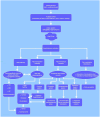Proposed Physiological and Neurobiological Mechanisms of Music's Effect, with a Focus on the Perioperative Period: Literature Evidence from Human, Canine and Feline Medicine
- PMID: 40872720
- PMCID: PMC12390301
- DOI: 10.3390/vetsci12080770
Proposed Physiological and Neurobiological Mechanisms of Music's Effect, with a Focus on the Perioperative Period: Literature Evidence from Human, Canine and Feline Medicine
Abstract
There is growing evidence regarding non-pharmacological therapies such as music as a supportive approach for the treatment of various clinical conditions in humans. Physiological and neurobiological research suggests that music exposure is related to endorphin, endocannabinoid and dopamine release, favourable effects on autonomic nervous system functioning and is associated with decreased pain perception and reduced stress response. Further evidence in humans demonstrates a beneficial role of music application during the perioperative period by improving various outcome measures, such as the perioperative stress and anxiety levels, the sedation or general anaesthetic requirements, the pain levels, the analgesic requirements and other parameters related to patient prognosis, without reported side effects. Accordingly, such interventions have been considered as a method of environmental enrichment for animal welfare enhancement, by masking potentially disturbing background noises and by ameliorating anxiety or aggressive behaviours in different stressful settings in dogs and cats. Furthermore, research has been lately extended to the potential music's effect in these species during the perioperative period, considered a stressful setting, as well. This review presents the existing evidence of music application focusing on the perioperative period of dogs and cats, as part of a multimodal approach, to improve their surgical outcome and welfare.
Keywords: anaesthesia; analgesia; anxiety; cat; dog; music; perioperative period; physiology; stress.
Conflict of interest statement
The authors declare no conflicts of interest.
Figures

Similar articles
-
Prescription of Controlled Substances: Benefits and Risks.2025 Jul 6. In: StatPearls [Internet]. Treasure Island (FL): StatPearls Publishing; 2025 Jan–. 2025 Jul 6. In: StatPearls [Internet]. Treasure Island (FL): StatPearls Publishing; 2025 Jan–. PMID: 30726003 Free Books & Documents.
-
Music interventions for mechanically ventilated patients.Cochrane Database Syst Rev. 2014;2014(12):CD006902. doi: 10.1002/14651858.CD006902.pub3. Epub 2014 Dec 9. Cochrane Database Syst Rev. 2014. PMID: 25490233 Free PMC article.
-
Active body surface warming systems for preventing complications caused by inadvertent perioperative hypothermia in adults.Cochrane Database Syst Rev. 2016 Apr 21;4(4):CD009016. doi: 10.1002/14651858.CD009016.pub2. Cochrane Database Syst Rev. 2016. PMID: 27098439 Free PMC article.
-
Music interventions for improving psychological and physical outcomes in people with cancer.Cochrane Database Syst Rev. 2021 Oct 12;10(10):CD006911. doi: 10.1002/14651858.CD006911.pub4. Cochrane Database Syst Rev. 2021. PMID: 34637527 Free PMC article.
-
Management of urinary stones by experts in stone disease (ESD 2025).Arch Ital Urol Androl. 2025 Jun 30;97(2):14085. doi: 10.4081/aiua.2025.14085. Epub 2025 Jun 30. Arch Ital Urol Androl. 2025. PMID: 40583613 Review.
References
-
- Casey M.A., Quon R., Jobst B.C. Eliciting neural mechanisms of music medicine for epilepsy. Interdiscip. Sci. Rev. 2022;47:129–146. doi: 10.1080/03080188.2022.2036520. - DOI
Publication types
LinkOut - more resources
Full Text Sources
Miscellaneous

